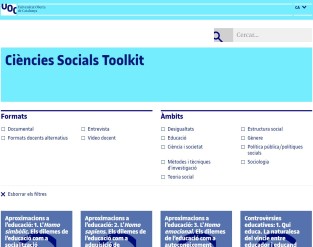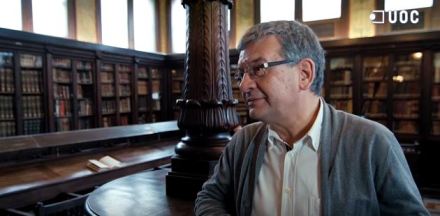Those conferences and workshops which help you to get an idea of what’s going on in a particular field leave you with a sense that you have got something you could hardly get otherwise. And being in Brussels at the pre-conference workshop “Use of video in Higher Education” (9th March) has been very productive for this reason. In spite of having to face several pairs of soldiers patrolling with submachine guns Brussels Nord train station and the Airport, attending this Media & Learning Association workshop has been really profitable.
Focusing the workshop not on ‘research’ about teaching with video but on ‘practice’ may have the downside of not discussing empirically-informed arguments, but it becomes richer as long as the goal of what is said is not to publish a particular paper but to reflect broadly (from and for practical experiences) on the potentials, problems and complexities of using video for teaching in the university. Listening to colleagues, both lecturers and technicians, academics and video-makers, which have been involved with video in the university for many years, explaining what they are doing with video in higher education, has been valuable. But what has been a luxury is listening and discussing with them about what is important, what is not and what should we be doing in the following years.
I won’t get into detail about the particular content, which ranged from the rich Jörn Loviscach’s talk on “Videos, quizzes, and flipped teaching” to the ways different universities organize, promote and reflect on their use of video; from a workshop on video production for mobile learning carried out by the colleagues of the School of Vocational Teacher Education at Oulu University of Applied Sciences to the final debate about production value in educational video. I won’t write about the coffee discussions on different platforms and technologies, or the technical and organizational challenges we are facing. I will instead focus on what has most surprised me. This has to do with this general idea of the general direction we are taking, and some of the disagreements or open discussions we are having and will need to negotiate in the near future.
FIVE SURPRISES
1. Lecture capturing. The main surprise to me has been to realize how much effort some universities are making in lecture capturing. Probably because I’m from a fully on-line University which has never taught through lectures, but through texts and the activities on them; perhaps because I find lectures captured on videos boring and annoying (I’ve downloaded several, but never even got close to finish a single one); whatever the reason, it hadn’t occurred to me that this could be an obvious development for face-to-face universities. But as Clive Young, from University College showed us through figures, students do use and even demand them, and its impact and potentialities relevant.
2. Closed universities. Another surprise has been to realize how little of the content produced by the universities is actually open for re-use. I knew that at my university we only share a little part of what we produce – and that although we are more and more of us which advocate for a more open orientation, it is not easy to change pre-conceived ideas and routines, and the difficulties of sharing our videos on-line –, but it struck me that this was the case, if I got the right impression, in almost all – if not all – the universities represented in the workshop.
3. Student’s video production. The third surprise has been the importance many colleagues give to the role of students in the production of videos, and the rich experiences they are generating because of this. Since my students are from a very broad range of ages and technological backgrounds, an important percentage of them feel very uncomfortable when dealing with video making, wikis or blogging – although many others appreciate being forced to get familiar with those tools. This has stopped me from asking them a more active involvement with video.
4. Should teachers produce videos themselves? The fourth surprise has been to find out that many colleagues share the ideal of teachers becoming video producers. I holded this vague idea a few years ago, but I abandoned it after realizing how time-consuming the technical part of video production is. Lecturers should commit to where they can add value. We must bear in mind, moreover, that as Clive Young reminded, as we get over the phase where early adopters incorporate video, the challenge will be how to incorporate the majority of teachers into educational video.
WHAT SHOULD WE BE DOING?
But what has shocked me the most is that what I perceive to be the priorities for the near future, that is, what should we be doing the following years, did not seem to me to be in general shared by many colleagues. This could be summarized in the following four aspects.
1. Where we put our time and money? I believe that the most interesting future for universities in relation to video is, on the one side, using self-made closed and perishable videos made with webcams or screen capture tools for feed-back and course day-to-day activites and clarifications, and on the other producing few perdurable videos of high quality content with at least acceptable technical quality, and upload them and make them available on-line for others (both lecturers and learners) to use them anywhere in the world.
We do not need to put all our content on video: not only because we can use a lot of already existing videos, but also because text is and will remain central, since video requires concision and does different things than written text. As I see it, we should focus on producing these quality content videos which provide an extra value and do not already exist, and then produce those self-made immediate videos which add value by providing feedback, clarifying aspects, and so on. Put it in another way: rather than investing a huge amount of resources to capture lectures every year or produce thousands of short mini-lectures, it would be probably be more collectively wise to to produce few long-lasting content that can be then used over and over again in flexible and different ways by other lecturers and learners all over the world.
2. Openness. Shall we all take this option, and invest (a significant part of) our time and our University’s money on this, in a few years time we would have an amazingly rich stock of resources to enrich our students’ – and everybody with an internet access – learning experience. But this imply committing to openness, even if it limits us in terms of copyrights, potential misuse and other obstacles.
3. Do not ‘capture’ on video but ‘create’ for video. I believe that we have to avoid doing videos that capture ‘real life’ talks, lectures or even interviews. In spite of the evidence that students use captured lectures in rich and creative ways, educational video improves, from my point of view, when we think and produce it specifically to be watched on a computer and follow the rules of what is an emerging genre: educational video. These rules is that videos do not only have to be preferably short and provide an important added value (in the sense that we should focus on what video does outstandingly, as Jack Koumi has systematised), but need also to be very precise and concise, and explore the potentials of images and sounds to produce meaning.
4. The role of lecturers. And I believe that lecturers in general should focus on the script, on thinking the verbal content and contributing to (but not being responsible of) the visual and audio design, but that the actual production must be carried out by professionals (although in low cost productions if necessary).




